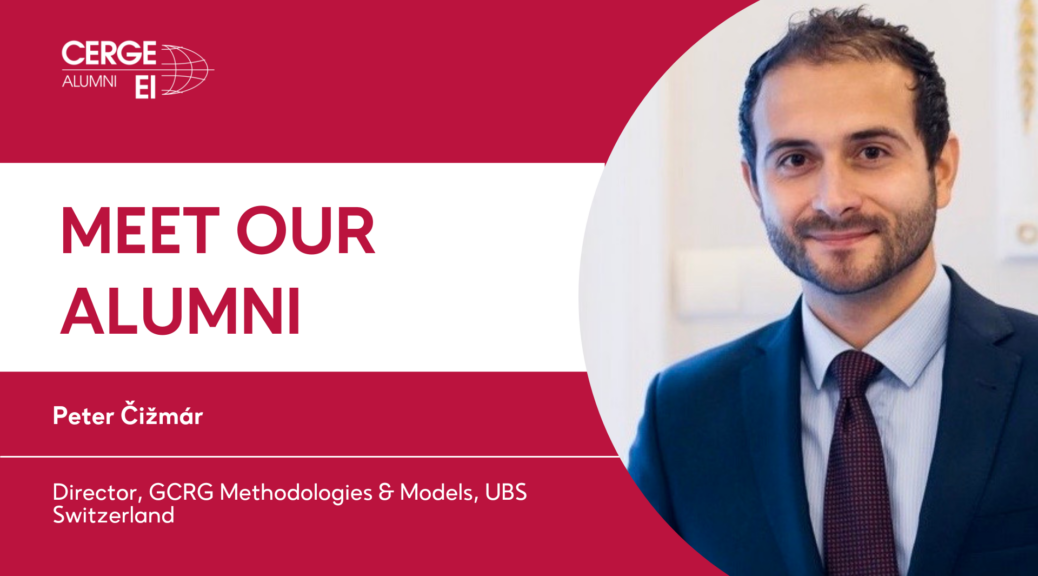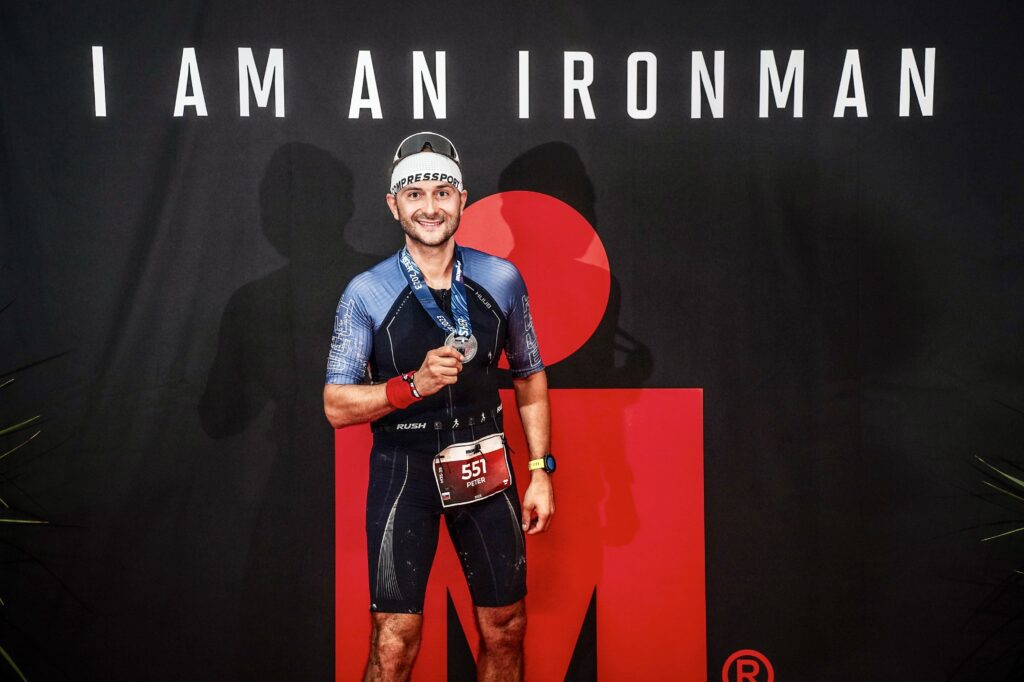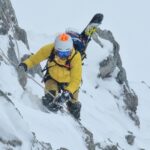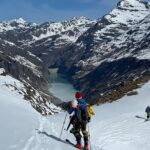In this interview, our alumnus Peter Čižmár, Director in GCRG Methodologies & Models at UBS, Switzerland, provides insights into AI in the banking sector. Join us as he shares his expertise on trends and opportunities, offering a glimpse into his international career journey as well as his most memorable extreme-sport experiences.
AI and the banking sector
In your current role as Director in GCRG Methodologies & Models at UBS, you lead AI model development projects in the conduct risk area. Could you provide some insights into the challenges and opportunities in this field, particularly in the context of the financial industry?
In my current role with UBS GCRG (Group Compliance, Regulatory & Governance) division, I specialize in conduct risk, which focuses on mitigating the impact of the firm’s or individuals’ conduct on clients or counterparties. Specifically, my responsibility is to proactively prevent employee misbehavior by developing sophisticated models that monitor and survey their activities.
Our primary focus is on analyzing written and spoken communication between employees such as traders, client advisors, and client-facing staff and clients. In this dynamic field, we deploy a range of models into production, varying from straightforward and rule-based to more complex and machine-learning-based engines. The overarching objective is to identify and address employee misbehavior in advance, thus averting potential regulatory fines, reputational damage, or fraudulent activities. Reflecting on the evolution of the compliance field, I’ve witnessed a significant shift from traditional, manual controls to the integration of advanced machine learning models. This transformation has opened up new opportunities.
In the audio surveillance field, the evolution of automatic speech recognition engines had a profound impact, particularly on the transcription of multiple languages and dialects with subsequent translation to English. The ongoing improvement in the robustness of speech processing suggests that this technology will soon become a fairly common practice within the banking sector.
Similarly, in the domain of written communication surveillance, recent developments in large language models and natural language processing techniques have revolutionized the screening of extensive volumes of text, including chats and email communications. This capability has become instrumental in capturing and discovering new patterns (e.g. emerging fraudulent schemes). Importantly, these advancements also contribute to significant time savings for reviewers and subject matter experts, as the models pinpoint specific problems, streamlining the investigation process and enabling more focused attention on potential issues.
The banking sector indeed possesses interesting data, often not publicly available, making it one of the industry’s most valuable assets. While the importance of quality inputs for effective models, especially those based on machine learning, is widely acknowledged, it seems that the full potential of data utilization has not yet been realized. There remains substantial room for improvement. Additionally, one notable challenge lies in translating complex business problems encountered on a daily basis into technically feasible solutions. The nature of these problems requires a nuanced approach, and finding the right balance between business requirements and technical feasibility can be a challenging task. Furthermore, the feedback loop from subject matter experts is a crucial element for continuous model improvement and retraining. Looking ahead, the financial industry is clearly on a journey of extensive digitalization and analytics engagement.
As someone deeply involved in AI and model development, how do you see the future of AI in the banking and wealth management sectors, and what trends do you think will have a significant impact?
We can look at the trend from two perspectives, cost and revenue. From a cost standpoint, these advancements can effectively automate and streamline a large number of monotonous, administrative, and time-consuming activities. For instance, the utilization of speech-to-text models combined with large language models for summarization makes tasks like summarizing meeting minutes after a call significantly easier. This, in turn, contributes to increased efficiency within the banking sector, reducing manual workload associated with such activities.
On the revenue side, machine learning-based solutions offer the potential for quicker and improved onboarding of new clients. Implementing chatbots that can intelligently pose relevant questions during the onboarding process based on a client’s background streamlines the experience for both clients and banking professionals. Additionally, analytics solutions can extend to optimizing portfolio and investment strategies, ultimately enhancing the overall client experience. Quicker and more personalized services provided by these solutions can contribute to a more efficient and satisfying interaction between the bank and its clients, potentially leading to increased customer loyalty and business growth.
You have had a diverse career journey, starting at OG Research and then spending several years at EY in Prague, Geneva, and Zurich. How did these experiences shape your professional growth and what key insights did you gain from working in different regions?
Throughout my professional journey, extensive travel has been a constant, exposing me to diverse cultures and working with individuals of varied personalities in numerous countries. Beyond acquiring proficiency in multiple languages, I gained insights into distinct work practices. I have to admit, doing business in France is quite different than doing business in Switzerland or Germany. Working abroad shaped my soft skills more than my hard skills. What I learned became an invaluable asset, shaping me more in terms of leadership and collaboration. Now, as a manager overseeing an international team, I draw upon the lessons from my international encounters.
CERGE-EI Experience
How did your education at CERGE-EI prepare you for what you are doing today?
I have to say, CERGE-EI studies were fairly challenging. The program provided a decent economic and mathematical coursework. One of the key takeaways was the improvement of effective problem-solving skills and the enhancement of my logical thinking abilities. I recall how we really thought deeply about problems and solutions and how we always collaborated. In the end, I learned to never give up.
While studying at CERGE-EI, you were serving as a student representative for quite some time. Can you share some memories on your studies? What or who made the biggest impact on you during your time at CERGE-EI?
Being a student representative was a truly intriguing role. It provided me with the opportunity to actively participate in regular meetings with professors, granting me insight into the authentic challenges within academia. One memorable initiative was our proposal to establish a student club. Upon identifying an abandoned space in the basement, we presented our idea and received a budget. Collaborating with my classmates, we undertook a comprehensive transformation of the basement. This involved repainting the entire space, installing new carpeting, procuring furniture, and organizing a grand opening with mojito drinks. While the project posed budgetary challenges, the end result was a fantastic student space for watching movies and playing games. I think the final outcome even surprised the professors.
Reflecting on my academic experience, I particularly enjoyed the stochastic calculus course with Professor Pakoš. Moreover, the exploration of game theory in micro classes gave me good memories. I continue to apply the concepts I learned in my daily work even today.
Out of a comfort zone
You actively participate in sports, including activities like helicopter skiing, Ironman, and extreme hiking. What motivates you to pursue them?
I live in a region with a lot of outdoor opportunities and I’m surrounded by young sports enthusiasts, so it is very difficult not to do them. However, I have to say all of them are quite extreme and I have to be very careful when executing them. Therefore, I must exercise utmost caution when participating in them. It requires very good comprehensive assessment of controllable risks and the establishment of contingency plans (Plan B). When everything works well, it is a fascinating experience. Often, such activities put me out of my comfort zone where I am on my own. This exposure not only enhances my sporting proficiency but also proves beneficial in my professional life, equipping me with problem-solving skills that are applicable to any challenge that may arise at work.
Which of your sports experiences was the most challenging for you? Which was the most dangerous? Why? Which one was your favorite?
The most challenging, I would say, was definitely the ultra-triathlon, Ironman. The first aspect to consider is the need to train for at least six days a week over a period of four months. Interestingly, this is arguably the easier part, as daily exercise is beneficial for health and not overly time-consuming when managing your workload effectively. The real challenge arises during the race itself. The Ironman race comprises of a 3.8 km swim (usually in the sea or a lake), a 180 km bike ride, and a 42.2 km run.
Throughout the race, strategic fueling is essential to maintain optimal levels of sugar and sodium, ensuring your body functions effectively. Despite these preparations, you may encounter a couple of crises that require you to push beyond what you thought was possible. Feeling great for 99% of the race can suddenly turn into a collapse in just five minutes. You need to be focused all the time. However, overcoming these challenges brings an incredible feeling as you approach the finish line after 11 hours, with the crowds cheering and giving you high-fives. Crossing the finish line, the announcer declares, “Peter, you are an Ironman.” Whether it’s worth the effort is subjective, but perhaps you might want to give it a try 😊. Engaging in this sport allows you to discover the true capabilities of your body.

Moreover, most Ironman races take place in beautiful destinations, providing an opportunity to combine the event with a small holiday. Personally, I have a nice memory of the Ironman in Nice, France. The bike course was incredibly difficult, featuring a 2,500m elevation and a breathtaking 40km downhill stretch into the city. Experiencing such stunning scenery at a speed of 70km/h on the bike was truly remarkable.
The most dangerous was traversing the Alpine range known as the “Haute Route.” The journey begins in Chamonix, France and concludes in Zermatt, Switzerland. For six days, participants engage in ski-touring and freeriding through deep snow, navigating glaciers with crevasses, and at times confronting extreme weather conditions. The weather can change unexpectedly, transitioning from a sunny day to a snowstorm with strong winds in just 30 minutes.
A vivid memory from this expedition involves crossing a couloir in exceptionally adverse weather conditions, with a complete whiteout. Fortunately, our guide, armed with extensive experience and a GPS navigation system, expertly led us through this challenging situation. The sound of an avalanche crushing down 10km away is quite scary. Adding to the tension, I lost one ski while freeriding down. Our guide eventually located it and the situation grew critical as I couldn’t call for a helicopter. I descended in 5m of deep snow with just one ski—a difficult task, underscoring the inherent risks of such adventurous endeavors.
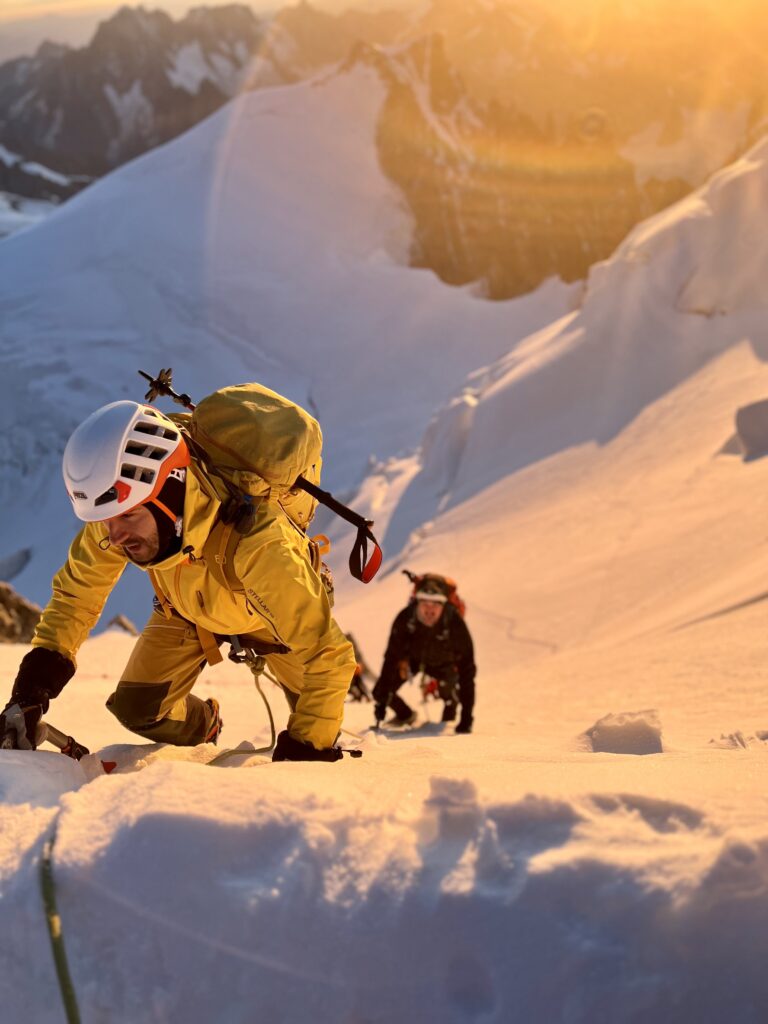
My favorite sports experience was in Greenland. I think it was the best holiday I have ever been on. Our expedition involved heli-skiing in the remote eastern part of Greenland, where we discovered an authentic, unique, and absolutely fascinating location. The helicopter transported us each day to the summits of peaks in closely located fjords. I distinctly remember the pristine landscape – no traces, not a single soul around, just seven individuals indulging in extreme freerides at that moment. It’s challenging to convey the experience of absolute silence – no birds, no planes, no signs of civilization. Carefulness was paramount, as any serious injury would mean a three-hour plane flight to the nearest hospital.
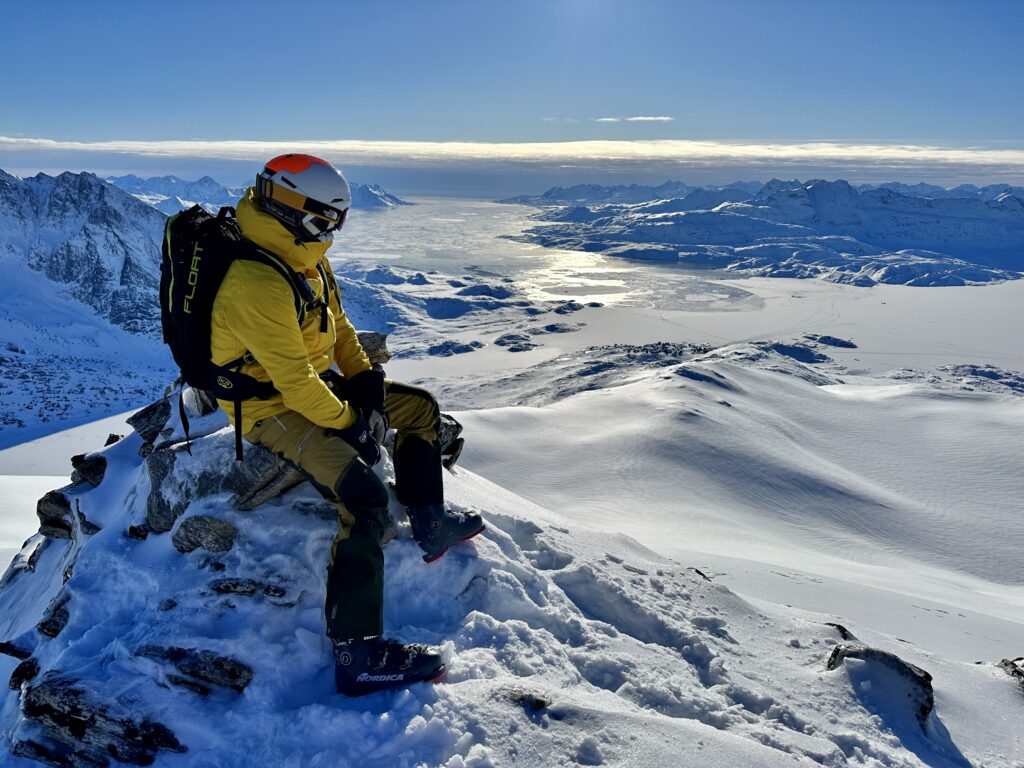
The unique sensation of skiing from the peak to the ocean was unparalleled. On one memorable day, we descended in this manner and arrived at a very remote village. It was completely empty as the entire population of around 50 people were out fishing in the frozen ocean. Upon entering the village, a local child confidently said to our guide, “I know you; you were here last year.” It felt like being on another planet – a journey to Mars. This incredible trip is one I really recommend to anyone seeking a truly extraordinary experience.
This interview was done in cooperation with our PhD student Mari Mtchedlishvili.
